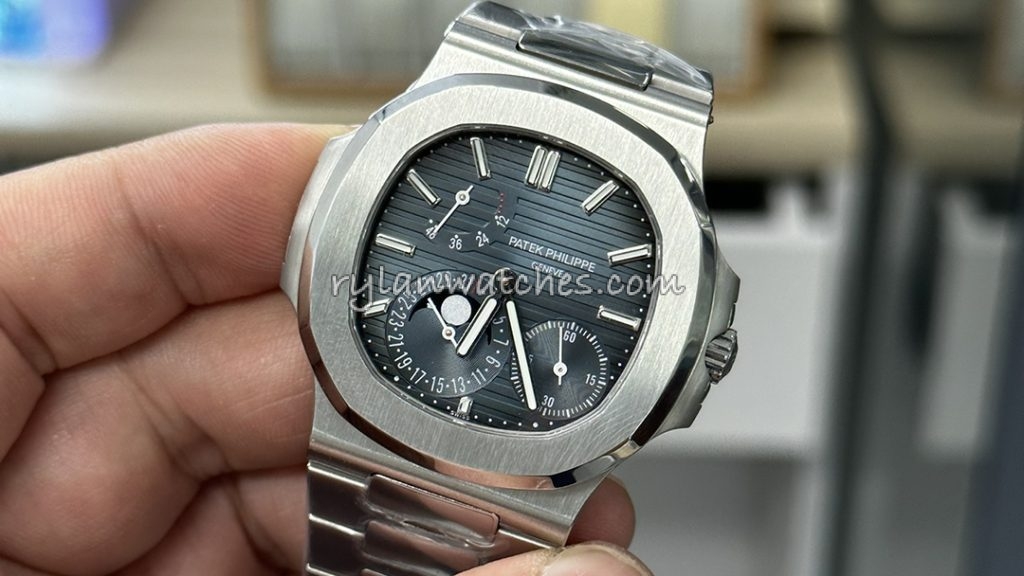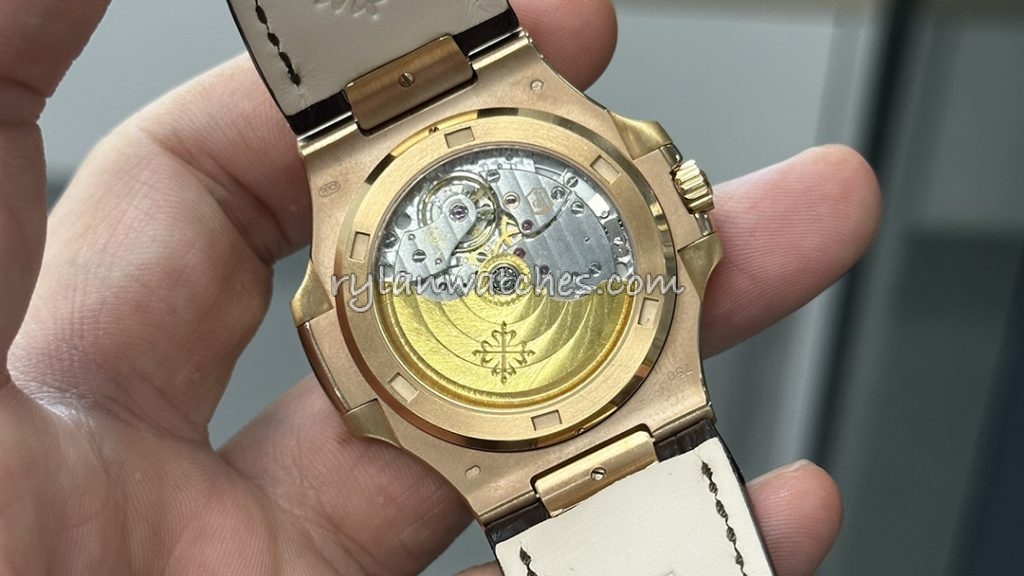How to Judge Quality, Spot Tricks, and Avoid Scams in the Super Clone Market
Patek Philippe super clone serial numbers are now a crucial detail for serious collectors. As the market for high-end 1:1 super clone Patek Philippe watches grows exponentially, the details that set the best apart are under more scrutiny than ever. These engraved numbers, reference numbers, and so-called “full set” certificates have become standard features of luxury-grade replicas—but what do they really mean? This comprehensive guide, drawing on real buyer experiences and in-depth factory analysis, reveals the truth behind Patek Philippe super clone serial numbers and certificates, how to recognize quality, and how to avoid being misled by common industry myths.
Background: Why Serial Numbers Matter in the Clone Market
For decades, Patek Philippe super clone serial numbers have been promoted as the “fingerprint” of luxury watches in the replica world. On genuine Patek Philippe timepieces, every case and movement carries a unique, factory-registered number, essential for servicing, resale, and provenance. As replica technology advanced, factories started copying these details to give their watches an “official” look. Today, almost every serious buyer asks: do super clone serial numbers make a replica more authentic or valuable?
Key Reality: For Patek Philippe super clone serial numbers, the engraved number and supporting certificates are mainly visual cues of craftsmanship—not proof of authenticity. Knowing how to interpret these features helps you avoid scams and make informed buying decisions.
Real Buyer Story: The “Full Set” Trap
Case Study: In 2024, an international collector named Jason bought a “full set” Nautilus 5711 super clone from an online retailer. The package included the watch, certificate, branded box, warranty card, and matching engraved numbers—complete with a Patek Philippe stamp and hologram. The seller claimed, “This number can be checked at the service center.” Eager to verify, Jason took the watch to a respected watchmaker.
The outcome? The case engraving looked excellent, but the and depth were subtly off. The certificate’s hologram was blurred and less dynamic than a real one. Most revealing, the movement’s number did not match any official Patek Philippe records. The “full set” was crafted for realism—but its serial numbers and paperwork had no functional value. For Jason, the lesson was clear: even high-end paperwork in the clone market is all about appearance, not proof.
“To the naked eye, my Nautilus clone’s serial numbers were perfect, but a professional could spot the differences in minutes. The experience taught me to buy for craftsmanship, not just paperwork.”
—Jason, Collector, USA (2024)

Factory Comparison: VS, PPF, 3K and the Serial Number Race
Leading factories in the replica watch industry, including VS, PPF, and 3K, have made significant advances in producing Patek Philippe super clone serial numbers. VS Factory is known for deep, precise engravings and placing numbers in exactly the right location with impressive accuracy. Some of their latest models even simulate aging for a “vintage” effect.
PPF Factory stands out for accurate case and movement numbers. Their certificates feature improved holograms and realistic paper texture, closely imitating genuine paperwork. 3K Factory is recognized for its dial and movement finishing; earlier models had shallower or inconsistent numbers, but recent upgrades have improved both engraving depth and reference accuracy. Some lesser-known factories rely on laser etching or simply omit serial numbers—a clear red flag for discerning buyers.
Pro Tip: While none of these numbers are officially registered, the best factories use them to show attention to detail, not for authenticity claims.
How Super Clone Serial Numbers and Certificates Are Made
Today’s leading factories invest heavily in replicating not only the watch itself but also the supporting paperwork. Using high-precision CNC engraving, they copy the depth, shape, and placement of genuine serial numbers. The model’s reference number (like 5711, 5167) is stamped on the case, certificate, and sometimes the box. Replica certificates mimic authentic paperwork, using similar paper stock, holograms, stamps, and even QR codes or watermarks. Careful examination will always reveal subtle differences—color, sharpness, or security features are never exactly the same. Some advanced super clones engrave random numbers on the movement, but these numbers do not correspond to any official Patek Philippe record.
Insider Knowledge: No matter how accurate the engraving, only official archives give real numbers their meaning. The numbers on clones, no matter how realistic, are for display and comparison only.
What Serial Numbers Can and Can’t Tell You
- CAN: Show the level of detail and seriousness of the manufacturing process (deep, accurate, well-placed numbers indicate top-tier clones).
- CAN: Help identify poor-quality fakes (missing, printed, or shallow laser-etched numbers are red flags).
- CAN’T: Be checked against the official system for servicing, insurance, or resale value.
- CAN’T: Legally prove authenticity—clones, regardless of detail, are for personal use and appreciation only.
- CAN’T: Guarantee overall quality—movement finishing and seller reputation matter far more.
Expert Tip: When buying, always request high-resolution photos of engravings and certificates. Compare details with official images and respected clone references.
Certificates: Details, Red Flags & Factory Secrets
Replica certificates have become increasingly sophisticated, but there are always ways to spot differences. Top factories match the weight, color, and texture of genuine certificates as closely as possible. Lower-tier replicas use thinner, glossier, or poorly printed paper. Genuine certificates use offset printing for sharp lines, while most replicas use digital printing, which often results in blurred edges or inconsistent color. High-end clones sometimes include simulated holograms, but genuine ones display a real 3D effect and subtle color changes that are hard to imitate. QR codes on replica certificates rarely link to anything meaningful and do not verify the watch. Authentic papers are hand-signed; replica papers use printed or copied signatures.
Red Flag: Any seller who claims their certificate is “official” or “verifiable” is being dishonest. Only genuine paperwork is recognized by authorized dealers.
Scam Alert: “Officially Verifiable” Serial Numbers and Other Myths
One of the most common scams in the super clone market is the claim that serial numbers are “officially verifiable.” This is never true:
- No clone number appears in the Patek Philippe database.
- Authorized service centers can spot replica paperwork and numbers in minutes.
- Reputable sellers never advertise “register this watch at Patek.”
- If a listing says “can be checked at the Patek Philippe service center,” avoid that seller.
Important: Super clones are for enjoyment and collection—never for fraud or resale as genuine. Trustworthy platforms always clarify this point.
Buying Tips: How to Avoid Common Pitfalls
- Choose sellers with strong reputations, clear return policies, and real-life photos of actual stock—not just marketing images.
- Don’t let “full set” certificates distract from the actual quality of the watch.
- Request close-up images of all engravings, dial details, movement, and certificates before purchase.
- Research the seller’s transparency—do they clearly state the watch is a clone and identify the factory?
- Understand that, in the clone world, serial numbers and certificates are for display, not verification.
- If in doubt, compare the paperwork and numbers to our Super Clone Buying Guide or consult experienced collectors for advice.
- For a detailed comparison of how real and replica serial numbers differ, check out this Chrono24 guide to verifying watch serial numbers.

FAQ: Patek Philippe Super Clone Serial Numbers, Certificates & Buying Super Clones
1. Do Patek Philippe super clone serial numbers have any official registration?
No, they are made to look authentic but are never registered with Patek Philippe and cannot be verified officially.
2. Can I check serial numbers on the Patek Philippe website?
No. There is no way to check a replica’s number or certificate in any official Patek Philippe service or archive.
3. Are certificates or papers useful for these engraved numbers?
They are for presentation and collector experience, not for authenticity or warranty. Genuine service centers do not accept these certificates for any official process.
4. Can serial numbers help me spot a bad fake?
Yes, to a point. Poor-quality fakes often skip proper engraving or use incorrect numbers. Well-made super clones use detailed, realistic engravings—but these are for realism only.
5. Which factory currently offers the most realistic serial number engraving?
As of 2025, VS and PPF Factories are leading in terms of engraving depth and authenticity, but other factories improve regularly. Always check recent reviews and buyer photos.
6. Is it legal to buy or own a super clone with replica serial numbers?
While buying or owning a clone for personal use is not criminalized in most countries, selling a clone as genuine or using fake papers for fraud is illegal and unethical.
7. Do high-end super clones use unique serial numbers for each watch?
Sometimes, but most factories still use repeatable or random number sets. “Unique” numbers on clones are only for show, not for tracking or registration.
8. Are QR codes on replica certificates ever real or linked to serial numbers?
QR codes on replica certificates rarely link to anything meaningful. Most scan to generic sites or error pages—not to Patek Philippe’s records.
9. Can certificates and serial numbers be improved further in the future?
Yes. As demand for realism grows, factories are expected to adopt micro-engraving, advanced watermarks, and even blockchain-style certificates—but official verification will always be impossible.
Future Trends: The Evolving Clone Number Game
As technology progresses, super clone factories are pushing boundaries of realism further every year. Trends include advanced micro-engraving techniques, sophisticated holograms, dynamic watermarks, better paper stocks, and even integration of digital certificates for buyer confidence—though these remain internal to clone platforms and do not provide official tracking. Top sellers are also increasing transparency about what is and isn’t possible in the clone market, especially regarding serial numbers and documentation.
Industry Insight: As buyers become more informed, factories focus not just on looks, but on lasting value, movement quality, and honest communication with customers.
Conclusion & Where to Learn More
Understanding Patek Philippe super clone serial numbers is essential for safe and informed replica watch shopping. These numbers and certificates are a testament to how far the industry has come—but they are not a guarantee of authenticity or value. When purchasing, focus on the quality of engraving, case finishing, dial detail, and seller reputation. Enjoy the realism and presentation, but never mistake replica paperwork for the real thing.
- Compare every detail to official images and well-reviewed clones.
- Choose sellers who are transparent about factory source, product features, and after-sales support.
- Remember: in the world of super clones, honesty and attention to detail matter more than a serial number.
For more tips and expert reviews on the latest super clone watches, visit our Super Clone Buying Guide and check out our Patek Philippe Super Clone Collection for side-by-side comparisons, buyer stories, and updates on the industry’s newest releases.
Disclaimer: This guide is for educational and informational purposes only. We do not promote the sale of counterfeit products. All trademarks and brand names are the property of their respective owners.
© 2025 RylanWatches.com. All rights reserved.

